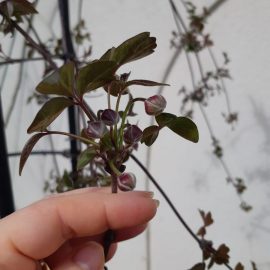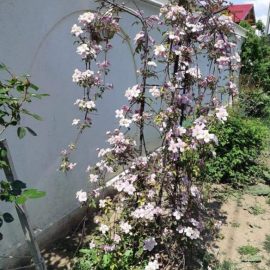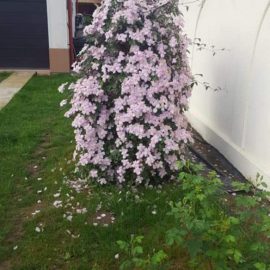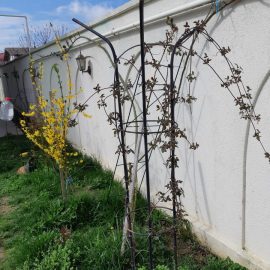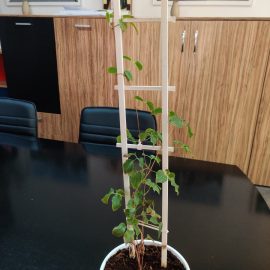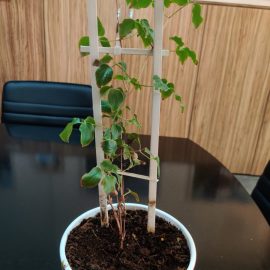Clematis, planting guide and care work
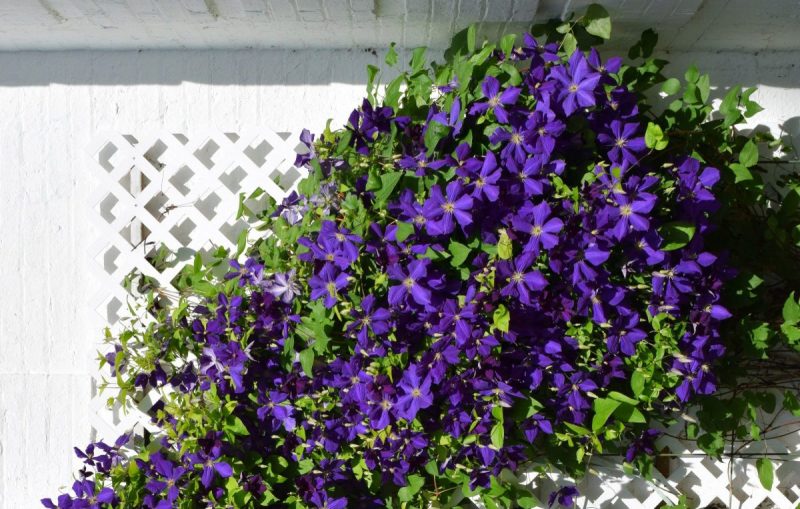
Clematis is a genus comprising about 300 species of hanging ornamental plants in the Ranunculaceae family. They are native to Europe and Asia. In some regions, certain species are considered invasive. The name of the genus comes from the ancient Greek “clematis” referring to a climbing plant.
It develops woody hanging stems, more sensitive at first and vigorous at maturity. The species from temperate climates have deciduous foliage, while some species from warm climates have persistent foliage. The leaves have an opposite arrangement on the branches and are compound. It has petioles that bend and cling to the supports. The genus also includes shrubs or herbaceous species. The flowering period and the positioning of the inflorescences on the plant differ depending on the species.
They are used in gardens and parks, on walls, fences, or structures, are very appreciated for the thickness of the leaves and the abundance of flowers. It has been grown as a decorative plant since the 17th century (China), and in Europe since the 18th century.
Species and cultivars
Clematis are divided into two groups: Clematis with small flowers and Clematis with large flowers.
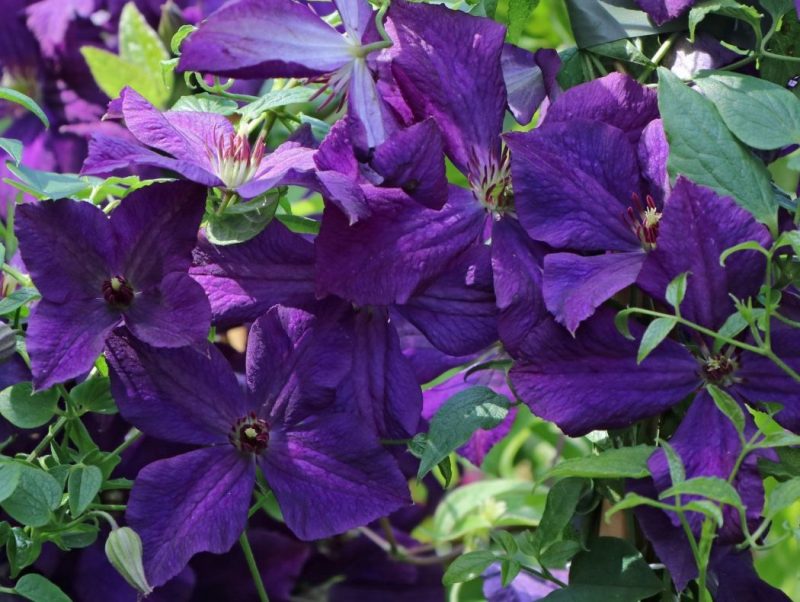
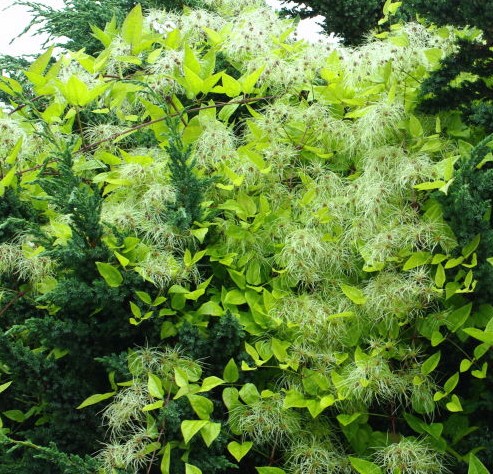
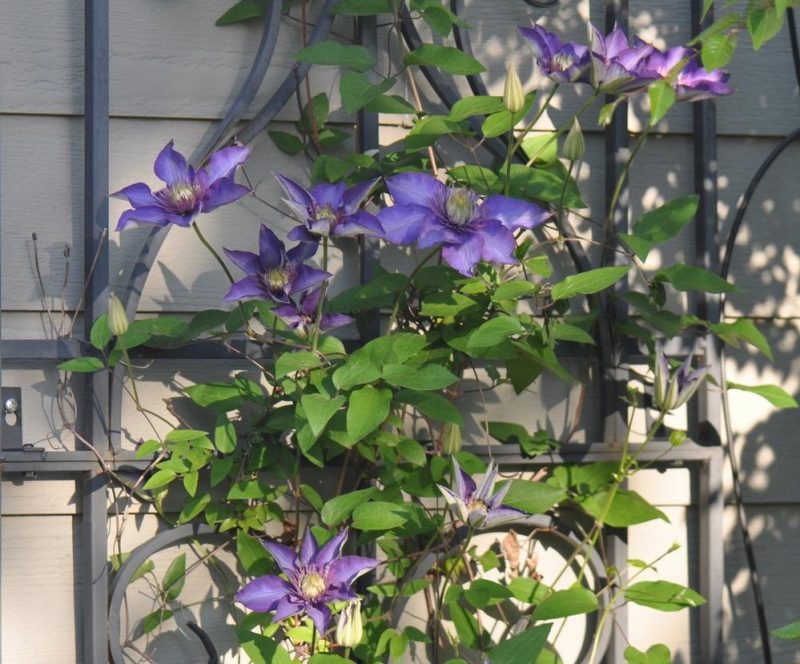
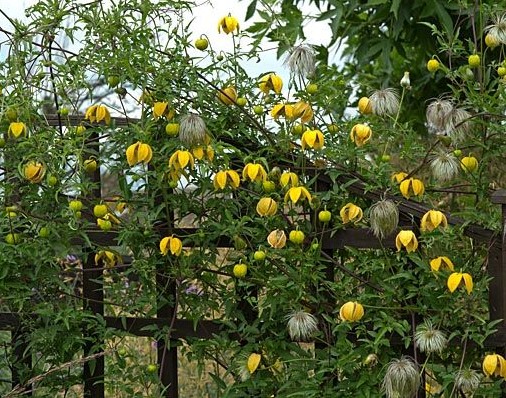
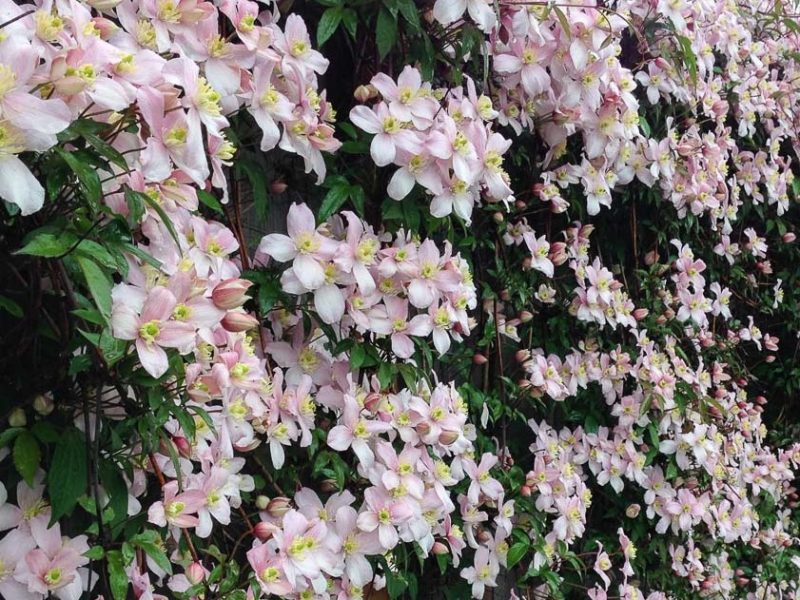
Clematis with small flowers
Clematis montana is a species native to China and the Himalayas, often found in temperate areas. It grows in the form of a vigorous vine, with branches that reach a length of 8-10 m. The leaves are made up of three leaflets. Flowering takes place in April-May. It forms white flowers, 4 cm long, fragrant, made up of 4 petaloid sepals. Cultivars:
‘Rubens’ – the flowers are pink/red; the leaves have a purple hue at first, after which they become green-bronze.
‘Tetrarose’ – the leaves have a reddish tinge and the flowers are lilac-pink.
Clematis tangutica is a species native to China and Mongolia and it reaches a height of 3-4 m. The leaves are feather-like, consisting of small leaflets with a serrated edge. It blooms in June, developing yellow flowers, 5-8 cm in size, pendant, bell-shaped. The fruits have the appearance of long, fluffy bouquets.
Clematis vitalba is an indigenous, invasive species. It blooms between July and September, forming panicles of small, white flowers. It is bothersome for other decorative species, so it is not planted for ornamental purposes. Instead, it is used as a rootstock.
Clematis viticella is specific to warmer areas, being native to the Mediterranean Basin. The branches are 2-4 m long and the leaves are feather-like, sometimes with lobed leaflets. The flowers are pink or indigo, with a diameter of 3-5 m. It blooms late, in June-August.
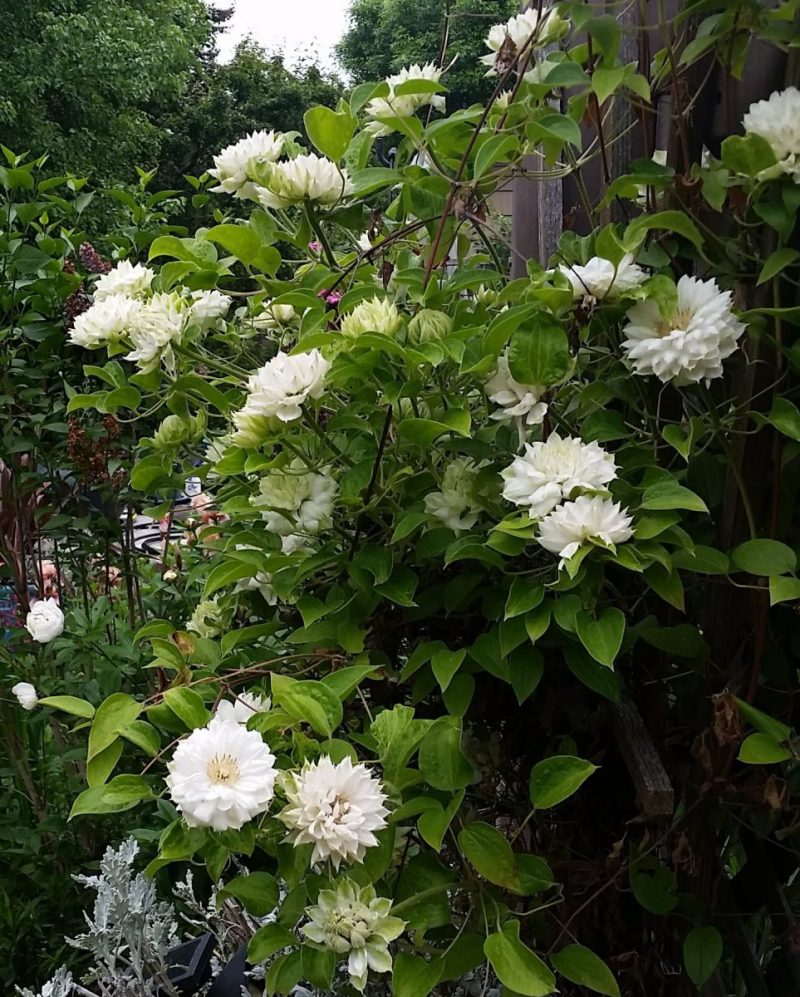
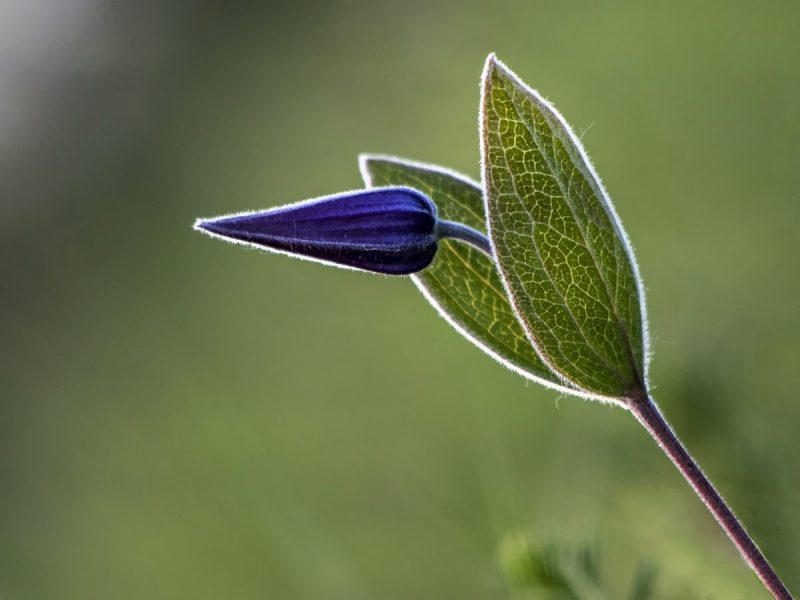
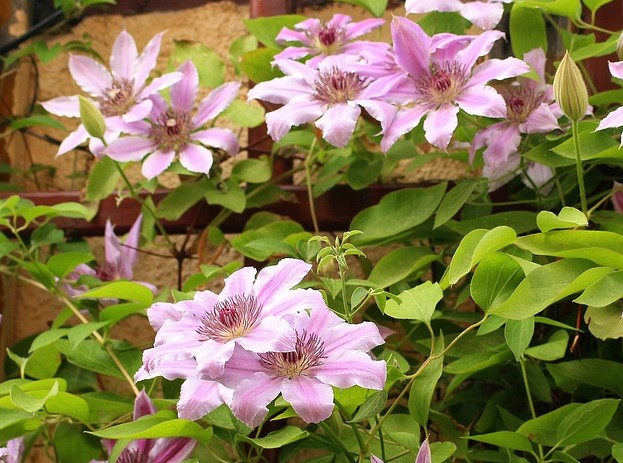
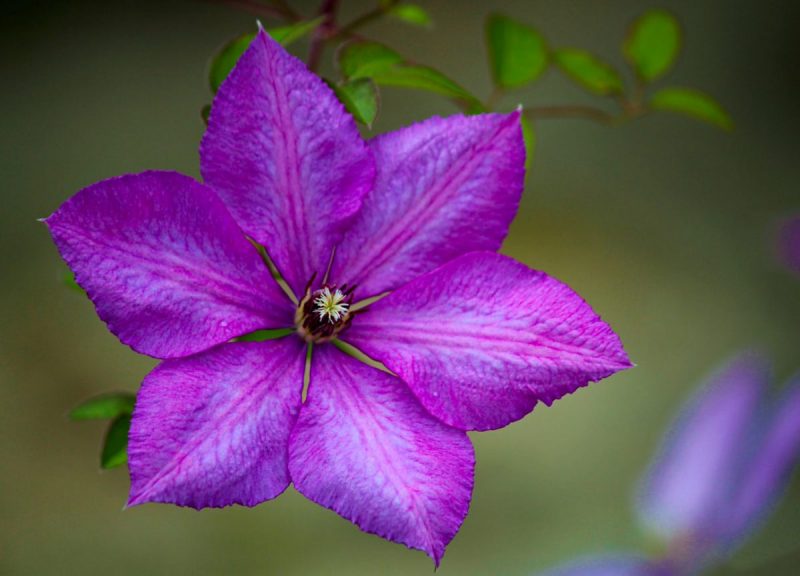
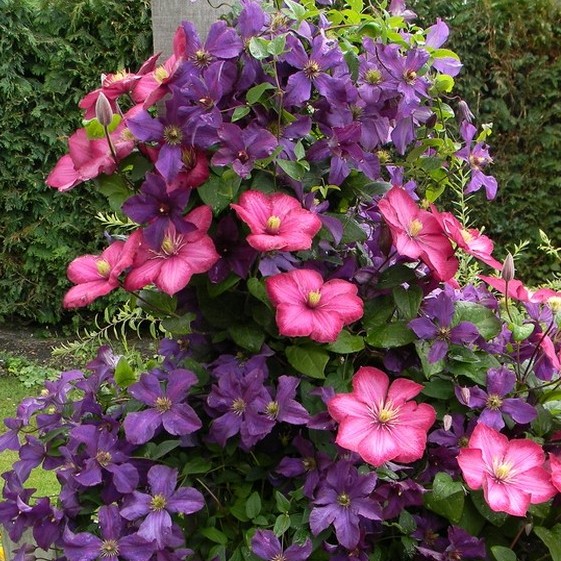
Clematis with large flowers
Clematis x jackmanii is a hybrid species between C. languinosa and C. viticella. It grows to a height of 3-4 m, has simple or compound leaves (3 leaflets), 10-12 cm long. It forms large, purplish flowers, consisting of 4-6 petaloid sepals. Cultivars:
- ‘Gipsy Queen’, ‘President’, ‘Jackmanii Superba’ – cultivars with purple-blue flowers.
- ‘Nelly Moser’, ‘Vyvyan Pennell’ – pink-purple flowers.
- ‘Ville de Lyon’ – carmine-red flowers.
- ‘Duchess of Edinburgh’, ‘Henry’ – white flowers.
Environmental conditions
Light. They grow in both bright and partially shaded spaces. They do not withstand southern exposure and require permanent shade at the base of the plant (with flowers). The same goes for perennials.
Temperature. In general, Clematis are resistant to frost, except C. tangutica , which is more sensitive.
Soil. It prefers rich, permeable soil with good water drainage.
Watering
It should be watered regularly so that the soil is always maintained damp.
Fertilization
It can be fertilized during the vegetative growth period with a universal fertilizer.
Recommended products
-
You can find products on a different store
Change Store -
You can find products on a different store
Change Store -
You can find products on a different store
Change Store -
You can find products on a different store
Change Store -
You can find products on a different store
Change Store -
You can find products on a different store
Change Store -
You can find products on a different store
Change Store -
You can find products on a different store
Change Store -
You can find products on a different store
Change Store -
You can find products on a different store
Change Store -
You can find products on a different store
Change Store -
You can find products on a different store
Change Store -
You can find products on a different store
Change Store -
You can find products on a different store
Change Store -
You can find products on a different store
Change Store -
You can find products on a different store
Change Store -
You can find products on a different store
Change Store -
You can find products on a different store
Change Store -
You can find products on a different store
Change Store -
You can find products on a different store
Change Store -
You can find products on a different store
Change Store -
You can find products on a different store
Change Store -
You can find products on a different store
Change Store -
You can find products on a different store
Change Store
Pruning
It is recommended to cut the Clematis plants to stimulate flowering. C. x jackmanii, C. tangutica, C. viticella require hard pruning in spring. C. montana should be cut only after the flowers fall.
Recommended products
-
You can find products on a different store
Change Store -
You can find products on a different store
Change Store -
You can find products on a different store
Change Store -
You can find products on a different store
Change Store -
You can find products on a different store
Change Store -
You can find products on a different store
Change Store -
You can find products on a different store
Change Store -
You can find products on a different store
Change Store -
You can find products on a different store
Change Store -
You can find products on a different store
Change Store -
You can find products on a different store
Change Store -
You can find products on a different store
Change Store -
You can find products on a different store
Change Store -
You can find products on a different store
Change Store -
You can find products on a different store
Change Store -
You can find products on a different store
Change Store -
You can find products on a different store
Change Store -
You can find products on a different store
Change Store -
You can find products on a different store
Change Store -
You can find products on a different store
Change Store -
You can find products on a different store
Change Store -
You can find products on a different store
Change Store -
You can find products on a different store
Change Store -
You can find products on a different store
Change Store
Diseases and pests
The pests that can infest Clematis plants are aphids, snails, and some species of caterpillars.
Recommended products
-
You can find products on a different store
Change Store -
You can find products on a different store
Change Store -
You can find products on a different store
Change Store -
You can find products on a different store
Change Store -
You can find products on a different store
Change Store -
You can find products on a different store
Change Store -
You can find products on a different store
Change Store -
You can find products on a different store
Change Store -
You can find products on a different store
Change Store -
You can find products on a different store
Change Store -
You can find products on a different store
Change Store -
You can find products on a different store
Change Store -
You can find products on a different store
Change Store -
You can find products on a different store
Change Store -
You can find products on a different store
Change Store -
You can find products on a different store
Change Store -
You can find products on a different store
Change Store -
You can find products on a different store
Change Store -
You can find products on a different store
Change Store -
You can find products on a different store
Change Store -
You can find products on a different store
Change Store -
You can find products on a different store
Change Store -
You can find products on a different store
Change Store -
You can find products on a different store
Change Store
Planting
It can be done in spring or autumn, during the dormant period, at temperatures above 5° C, if the soil is not frozen and there is no danger of frost. Be sure to purchase planting material from authorized nurseries. Immediately after planting, the soil should be well-trodden to compact the soil and then watered abundantly. After that, the soil should be kept permanently damp.
Propagation
Clematis can be propagated through seeds, cuttings, grafting, and layering.
- C. tangutica, C. viticella, C. vitalba are propagated through seeds. These must be sown in March-April.
- pruning is done in greenhouses, in June-July. Semi-lignified branches have to be used, which are left to take root in an enclosed space. It is a more difficult procedure, recommended to specialists.
- grafting is done for Clematis with large flowers, on the rootstocks of C. vitalba or C. viticella. The process takes 1-2 years.
- layering is easier to perform (the serpentine layering technique).
Recommended products
-
You can find products on a different store
Change Store -
You can find products on a different store
Change Store -
You can find products on a different store
Change Store -
You can find products on a different store
Change Store -
You can find products on a different store
Change Store -
You can find products on a different store
Change Store -
You can find products on a different store
Change Store -
You can find products on a different store
Change Store -
You can find products on a different store
Change Store -
You can find products on a different store
Change Store -
You can find products on a different store
Change Store -
You can find products on a different store
Change Store -
You can find products on a different store
Change Store -
You can find products on a different store
Change Store -
You can find products on a different store
Change Store -
You can find products on a different store
Change Store -
You can find products on a different store
Change Store -
You can find products on a different store
Change Store -
You can find products on a different store
Change Store -
You can find products on a different store
Change Store -
You can find products on a different store
Change Store -
You can find products on a different store
Change Store -
You can find products on a different store
Change Store -
You can find products on a different store
Change Store
In addition:
- in general, Clematis are sensitive to transplanting.
- some species bloom on old branches (C. montana and varieties), and others bloom on new branches (of the current season).
- C. vitalba develops many root suckers and it is very easy to multiply.
- the branches should be directed towards the support early.
- avoid procedures on young shoots, that are already fixed.
- it withstands a low acid-neutral pH.
- it is a toxic plant to humans.














































































































































































































































































































































































































































